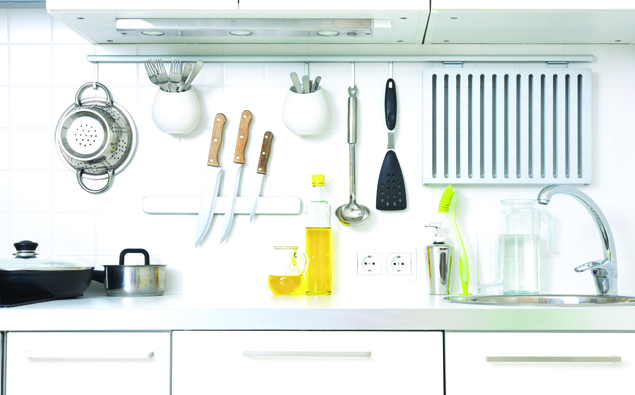Knives, Fires, and Germs, Oh My!
By Kristy Alpert
As more and more home cooks are embracing their inner Top Chef, it’s more vital than ever to keep in mind that cooking can be a dangerous business. In any other setting, open flames, sharp objects, and potential disease cultures lurking around every corner would be considered a hazard zone — but not so in the kitchen. It’s in this room that you can just as easily flambé your filets to perfection as emblazon your stove with chaotic grease fires. As every professional chef will attest, safety is the one necessary constant in any kitchen, restaurant, or home.
“Entertaining and cooking at home can be so much fun. However any time there is fire, high temperatures, and grease or fat (i.e. butter and oils) involved, there is always the chance of danger,” says Chef John Tesar, former contestant on Bravo’s Top Chef and chef and restaurateur of the award-winning Spoon Bar & Kitchen in Dallas. “You need to manage the moment and know how to extinguish the flames to protect your home and your kitchen.”
Tesar has been working in restaurant kitchens for more than 20 years, and offers these tried-and-true tips for keeping your kitchen safe and professional.
- Turn off your smoke alarm before sautéing to avoid unnecessary panic, and always keep a fire extinguisher under the sink.
- Avoid salmonella concerns by using bleach to wipe down areas that have touched raw fish or poultry.
- Never try to put a kitchen fire out with water; salt or milk works best to extinguish grease fires.
- Choose the right knife for the job.
- Never leave knives in soapy or cloudy water.
- Point pot handles toward the back of the stove.
- Stir away from the body.
- Store heavy items on lower shelves and lighter items on high shelves.

